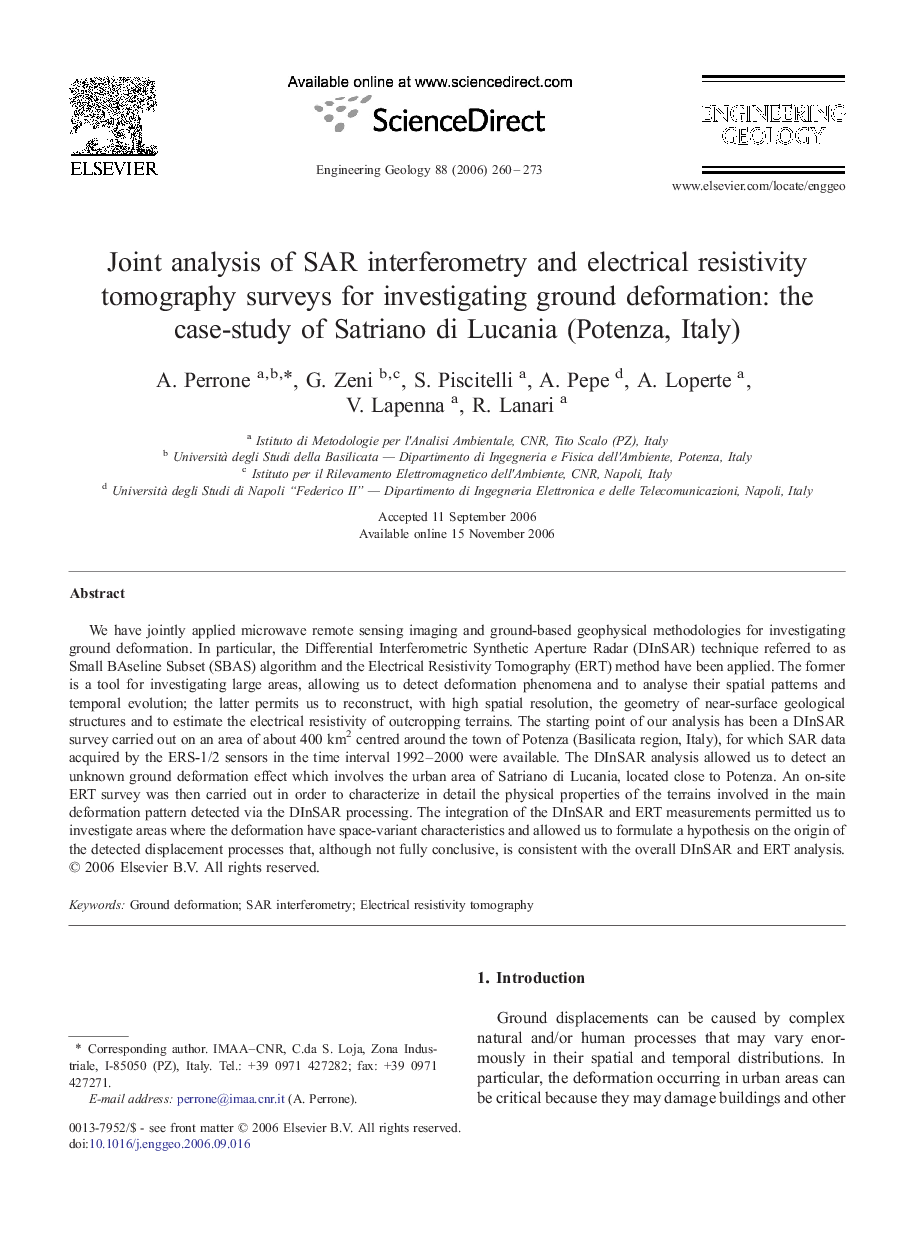| Article ID | Journal | Published Year | Pages | File Type |
|---|---|---|---|---|
| 4745147 | Engineering Geology | 2006 | 14 Pages |
We have jointly applied microwave remote sensing imaging and ground-based geophysical methodologies for investigating ground deformation. In particular, the Differential Interferometric Synthetic Aperture Radar (DInSAR) technique referred to as Small BAseline Subset (SBAS) algorithm and the Electrical Resistivity Tomography (ERT) method have been applied. The former is a tool for investigating large areas, allowing us to detect deformation phenomena and to analyse their spatial patterns and temporal evolution; the latter permits us to reconstruct, with high spatial resolution, the geometry of near-surface geological structures and to estimate the electrical resistivity of outcropping terrains. The starting point of our analysis has been a DInSAR survey carried out on an area of about 400 km2 centred around the town of Potenza (Basilicata region, Italy), for which SAR data acquired by the ERS-1/2 sensors in the time interval 1992–2000 were available. The DInSAR analysis allowed us to detect an unknown ground deformation effect which involves the urban area of Satriano di Lucania, located close to Potenza. An on-site ERT survey was then carried out in order to characterize in detail the physical properties of the terrains involved in the main deformation pattern detected via the DInSAR processing. The integration of the DInSAR and ERT measurements permitted us to investigate areas where the deformation have space-variant characteristics and allowed us to formulate a hypothesis on the origin of the detected displacement processes that, although not fully conclusive, is consistent with the overall DInSAR and ERT analysis.
